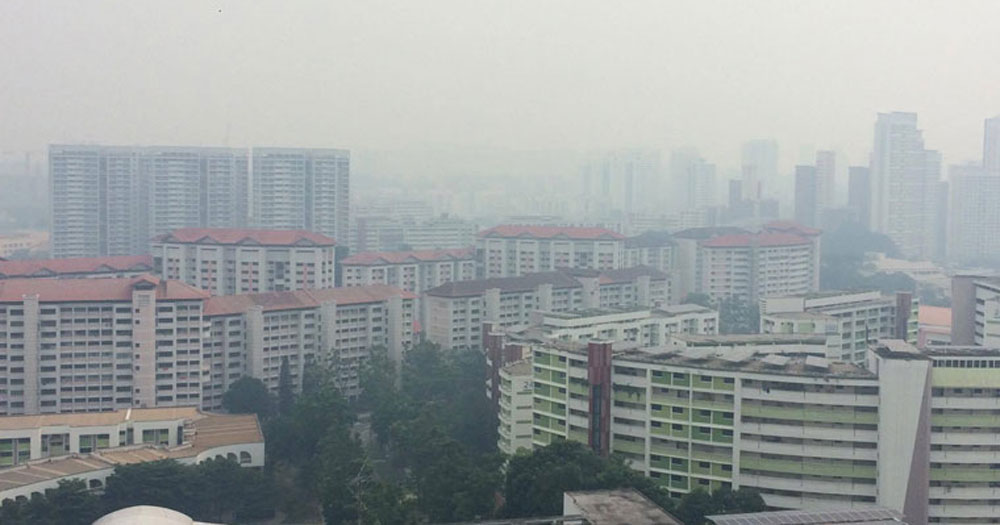Severe haze could come back to Singapore in 2019, Today reported.
And the severity of it would be similar to the one that swept over the republic in 2015.
Haze forecast
The "moderate risk" of severe haze forecast was released by the Singapore Institute of International Affairs (SIIA) in its inaugural haze outlook report.
SIIA is a think-tank.
It launched the Haze Outlook for Southern Asean Summary Report on Thursday, May 2 at the 6th Singapore Dialogue on Sustainable World Resources Conference, held at the Fullerton Hotel Singapore.
The full report will out on SIIA’s website later in May.
What is the report for
The report aims to help regional countries determine if the haze could return to Indonesia, Malaysia and Singapore during the mid-year dry season.
It can serve as a risk assessment and predictive tool.
Simon Tay, a professor and chairman of SIIA, said: “For the past few years, there have been blue skies, but it continues to be important to understand why this has happened, and to continue efforts to achieve better outcomes even as climatic and other factors change."
“We hope that our (report) will keep stakeholders focused on the risks and reinforce efforts to prevent the recurrence of severe haze.”
SIIA plans to release the outlook on a yearly basis.
It will include more feedback from government agencies, companies, academic institutes and non-governmental organisations in future reports.
Different colours to show likelihood
This is the first effort to use both quantitative meteorological data and qualitative assessment of intervention on the ground to predict haze.
It ranks the possibility of transboundary haze occurring on a scale of green (low risk), amber (moderate risk) and red (high risk).
The previous two severe haze years occurred in 1997 and 2015.
The haze in 2015 saw the Pollutant Standards Index (PSI) hitting hazardous levels in Singapore between September and November.
The assessment of a potential haze event considers factors such as the weather, geographical location of previous fires and efforts by government and private sectors to reduce fires when determining the severity of haze.
2019 is El Nino year
The summary report noted that El Nino exacerbated the severe haze episodes in 1997 and 2015.
El Nino is a phenomenon involving the warming of the central and eastern parts of the Pacific Ocean.
It occurs every three to seven years.
Even though 2019 is forecast to be an El Nino year, its effect is expected to be weaker.
The study also noted that Indonesia has restored some 679,000 hectares of peatland, which are partially decayed plant matter.
This has reduced the number of fires compared to 2015.
The primary sites of fires in 1997 and 2015 were on degraded peatlands.
Since 2015, Indonesia’s government agencies and agroforestry companies had intensified engagements with village communities to prevent, detect and suppress fires.
If you like what you read, follow us on Facebook, Instagram, Twitter and Telegram to get the latest updates.
